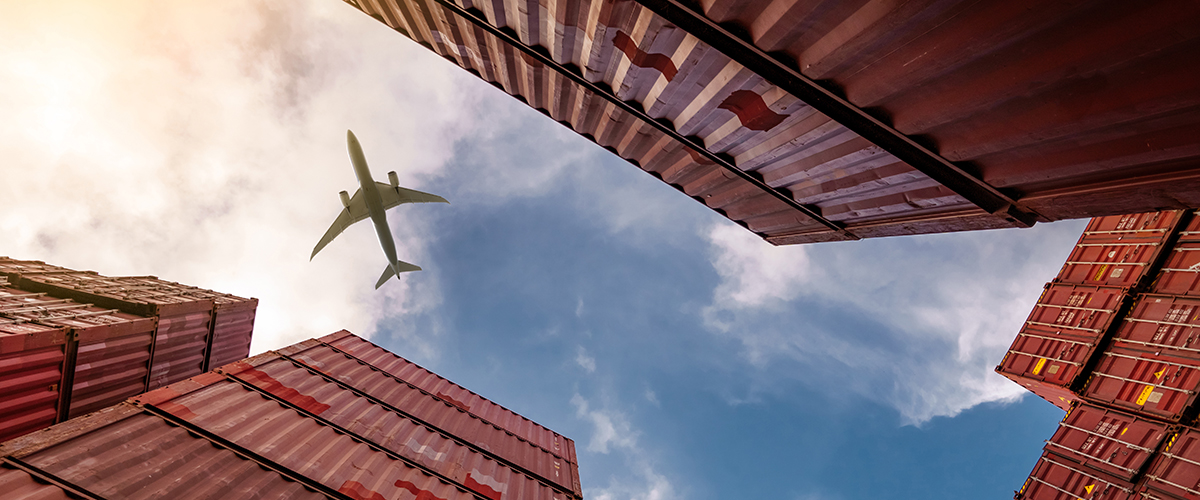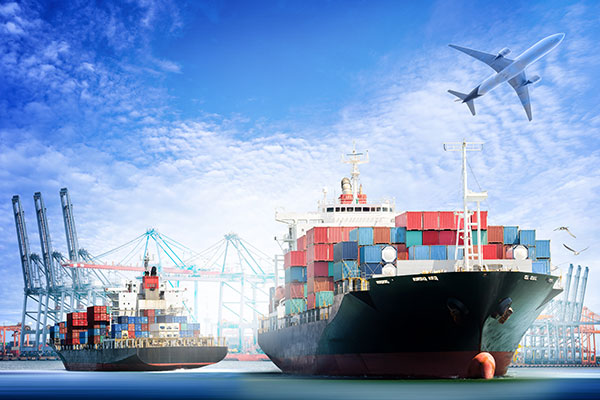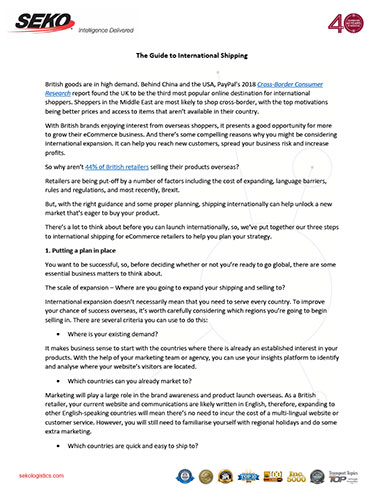Manufacturers Are “Pivoting” Between Ocean and Air Capacity
SEKO Logistics has said many of its manufacturer clients are “pivoting” between seafreight to airfreight and “leveraging air capacity as an option when they can”.
SEKO Logistics said growth in cross-border e-commerce is increasingly pushing manufacturers to use airfreight, as seafreight capacity struggles to cope with pressure.
The company also noted that some of its clients are investing in future airfreight capacity based on their estimated sales.
Brian Bourke, Chief Growth Officer at SEKO, explained:
“[Manufacturers] want to be the company that has that commodity or product or skill in inventory, ready to ship domestically in their home market. A lot of these manufacturers have deals with retailers that include shelf space. If they are not able to fulfill those initial points of sale, they lose that shelf space and so it’s really about them pivoting and investing in future sales at this point to make sure.”
Bourke said that to serve its customers, SEKO is using a mix of air cargo capacity from “freighter conversions, freighters aircraft from traditional passenger airlines, as well as passenger capacity that exists on international routes”.
He added:
“We are we working and actually running our own charters. The answer [to our customers] is yes to everything.”
Bourke noted that the return of passenger services — and bellyhold capacity — is one of the “most efficient and easiest” ways that it is able to offer airfreight capacity to its customers.
“We will work with our airline partners, the charter brokers and cargo airlines, and a combination of all those to find the capacity that’s needed to meet demand.”
However, on some routes — such as US-Europe — it is more challenging to secure available capacity.
In these cases, Bourke said:
“We will will create will create capacity if we have to and that’s just the nature of where we are as a market. But our preference will always be to offer passenger capacity.”
SEKO also noted that India’s current coronavirus crisis has negatively impacted available bellyhold capacity in the Indian subcontinent area.
Chaminda Gunasekera, senior director-airfreight / e-commerce / network development at SEKO Logistics, said:
“When it comes to the subcontinent, there’s a huge connection with Middle East, because of professionals working in the Middle East. They travel between the subcontinent and the Middle East and when it comes to cargo, it’s mainly driven by passenger aircraft. So that’s one of the challenges that the Indian subcontinent had recently where India had been hit by challenges in terms of Covid.”
Gunasekera continued:
“We have to give the credit to some of the Middle Eastern carriers like Emirates and Qatar Airways — and even Turkish — because they have been maintaining certain flights [to and from] the Indian subcontinent.”
Related White Papers
The Guide to International Shipping
There's a lot to think about before you can launch internationally, so, we’ve put together our three steps to international shipping for eCommerce retailers to help you plan your strategy. Download Now!
Ecommerce has entered the mainstream in force, with the Global ecommerce market now standing at over $1 trillion - so retailers who ignore this growing market segment do so at their own risk. But how does a traditional ‘bricks and mortar’ business move into the internet space? Download Now!
Related: U.S. Port Congestion Has Some Retailers Forgoing Ocean Freight in favor of Air Freight 
Article Topics
SEKO Logistics News & Resources
SEKO Logistics take a deep dive into supply chain complexities SEKO Logistics’ executives address Peak Season potential amid economic backdrop SEKO Logistics announces acquisition of Pixior LLC SEKO’s Bourke assesses key global logistics trends and themes Shutdowns in China leave things open-ended for supply chain stakeholders SEKO’s Gagne provides insights on 2022 supply chain and logistics landscape ShipStation welcomes SEKO’s LTL capabilities for its partner network More SEKO LogisticsLatest in Transportation
Nissan Channels Tesla With Its Latest Manufacturing Process Why are Diesel Prices Climbing Back Over $4 a Gallon? Luxury Car Brands in Limbo After Chinese Company Violates Labor Laws The Three Biggest Challenges Facing Shippers and Carriers in 2024 Supply Chain Stability Index: “Tremendous Improvement” in 2023 Trucking Association CEO on New Biden Policy: ‘Entirely Unachievable’ Two Weeks After Baltimore, Another Cargo Ship Loses Power By Bridge More Transportation















